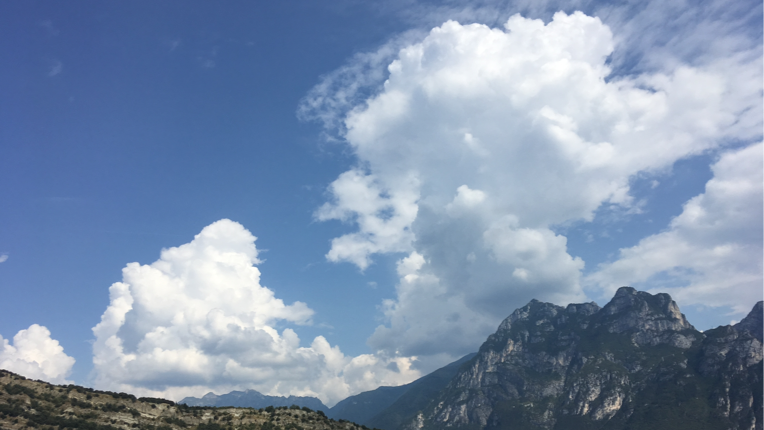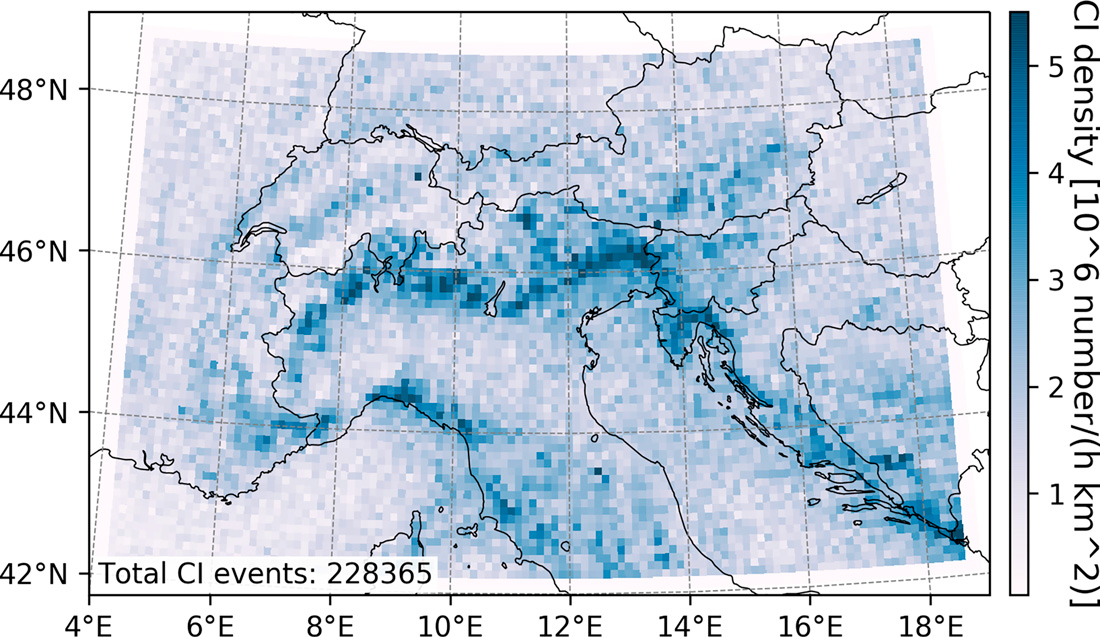Working group on Orographic Convection

Picture rights: Daniel Kirshbaum.
The TEAMx working group on orographic convection, led by Daniel Kirshbaum (McGill University) and M. Marcello Miglietta (ISAC-CNR), consists of about 20 scientists from 8 countries. In preparation for the TEAMx field phase in 2024-2025, three main research topics have been identified, some of which are completed and others ongoing:
- A pan-Alpine convection initiation climatology, aimed at identifying mechanisms relevant for convective triggering. This climatology was completed over the 2005-2019 period using lightning data, an effort led by Agostino Manzato. The resulting article has been published in Monthly Weather Review (Manzato et al. 2022) . It includes, among other things, maps of both total cloud-to-ground lightning and convection initiation, showing regional CI hotspots that merit further study to physically explain. These results have driven the choice of the target areas for the forthcoming field campaign.
- With the observational climatology completed, an excellent complement would be an analogous NWP climatology using convective-scale models over the Alpine region. However, because different operational centres use different domains, each covering only a portion of the Alpine region, this climatology has not been produced.
- A shorter-term convection permitting model inter-comparison is currently being pursued, where different models with O(1 km) grid spacing are verified against observations over a limited number of Alpine convection events. This effort will provide insight into the skill of modern convective-scale NWP models in simulating diurnally forced and orographic convection, and it will facilitate identification of model limitations. For the purposes of TEAMx, the latter are more relevant than synoptically forced events, because they depend more on local PBL exchange processes. A variety of deterministic model runs (AROME, COSMO, ICON, MOLOCH, WRF, …) are included in the inter-comparison effort. A list of relevant meteorological events and/or problematic forecast cases over different regions has been selected (mainly focusing on primary convection triggering), and analysis of the model simulations is ongoing.
- An inter-comparison of idealized large-eddy simulations of diurnally forced orographic convection is in progress. The objective is to determine the variability of explicitly simulated diurnal mountain-boundary-layer and moist convective development in a highly controlled environment. The latter limits the sources of ensemble variability to model numerics and key parameterization schemes (3D turbulence and cloud microphysics). Simulations at horizontal grid spacings of 500 m and 125 m have been completed and are currently under analysis.
- As a logical complement to the above LES inter-comparison of diurnally forced orographic convection under weak winds, an inter-comparison of mechanically forced convection under stronger winds would be desirable. This work, however, has not commenced yet. Researchers interested in participating in this project are encouraged to contact the working group chairs.

